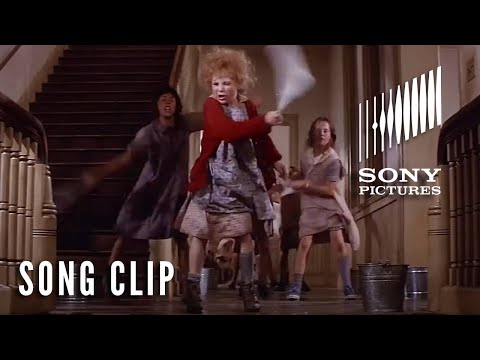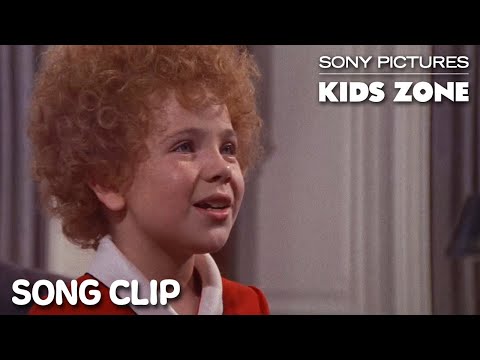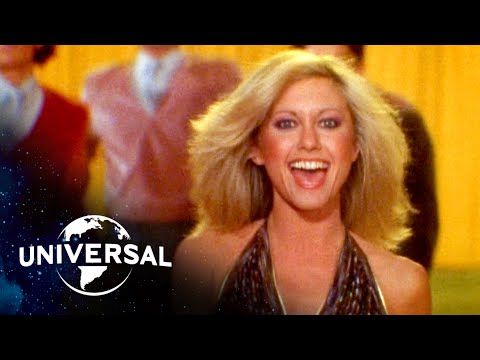John Huston was one of the greatest filmmakers who ever lived, an outsized figure with a legendary reputation as a Hemingway-esque man’s man.
His best films include “The Treasure of Sierra Madre” (1948), “The Man Who Would Be King” (1975), “The African Queen” (1951), “The Night of the Iguana” (1964) and “Prizzi’s Honor” (1985).
Huston once played Orson Welles in the filmmaker’s final film, “The Other Side of the Wind” and Huston himself was once portrayed by no less than Clint Eastwood in “White Hunter, Black Heart” (1990).
Glancing at Huston’s staggering list of works, there are a few late career jobs that didn’t work, though all are worthy of interest and rediscovery. Yet, none jump out as forcibly as “Annie” (1982), the big-budgeted adaptation of the Broadway musical sensation.
Leapin’ Lizards! Huston directed that movie?

Not only did Huston make a massive ’80s summer movie, but this silly, adorable hit is also a true anomaly: it’s a period piece, a musical and an early big budget comic book film adaptation.
“Annie” is based on Harold Gray’s “Little Orphan Annie” comic strip, which was published in some form from 1924-2010. It became a radio program (1930-1942), spawned two different films (one from RKO in 1932, the other from Paramount in 1938) and became a monster Broadway success in 1977.
At one point early in its run, the title role was famously played by a young Sarah Jessica Parker.
Adapting a movie based on a stage show success like “Annie” was inevitable, though its success during the age of MTV domination made it seem like an iffy, antiquated choice.
Huston was actually perfect to counter this, as his film is every bit as sentimental, sweet and in line with Golden Age of Hollywood tradition as the material needed. There’s nothing remotely hip, modern or cynical about it, which is exactly why it works.
While not as visually demonstrative of its comic book roots as George A. Romero’s “Creepshow,” released the same year, nor anywhere near as stylish as “Dick Tracy” (1990) or “Frank Miller’s The Spirit” (both based on source material from the same era as “Annie”), the performances suggest the comic strip origins as much as Broadway.

Aileen Quinn, donning a massive wig and a smile that could melt an iceberg, stars in the title role. Her Dickensian upbringing in an orphanage includes daily abuse from the always drunk, psychotic Mrs. Hannigan (Carol Burnett).
When Annie is adopted by Daddy Warbucks (Albert Finney) and finds a surrogate mother figure in Warbucks’ secretary, Grace Farrell (Ann Reinking), it seems her greatest dream of finding a family is realized.
Yet, Miss Hannigan won’t let her find happiness and recruits her rotten brother Rooster (Tim Curry) and his equally awful girlfriend (Bernadette Peters) to get her back.
If the opening number, in which Annie muses about the life she dreams of having, doesn’t choke you up, abandon ship immediately. It’s a sugary sweet intro and one of the few scenes with real feeling.
From that point on, it leaps from one oversized set piece to another, with one song dedicated entirely to the naming of Annie’s dog. It’s that kind of movie, Take it or leave it.
Despite how wrong one would imagine Huston would seem for the material, “Annie” never trips him up the way Robert Altman tried and failed big with his similarly lavish comic book adaptation and full-fledged musical, “Popeye” (1980).
Burnett’s wild performance is somehow as loopy and comic as you’d hope but has a welcome edge, too. Having Peters and Curry on hand as a truly loathsome duo was a master stroke; they bring a welcome intensity to the third act.
RELATED: That ‘Grease 2’ Cult Following (Sort of) Explained
In fact, the seriousness of the song-free climactic chase is a nice change of tone. At times, it sounds like Finney is actually impersonating Huston himself. Reinking is luminous, her considerable talent as a Broadway actress in full view.
Although he once sported one of cinema’s greatest voices, Geoffrey Holder, playing Punjab, is in the same boat as co-star Roger Minami – they’re stuck playing embarrassing stereotypes and never given the opportunity to emerge as anything more than background figures.
Edward Herrmann’s hambone, theater-ready performance as FDR isn’t an indication of how great he would be elsewhere. In general, the FDR scene is a deadweight scene that should have been axed.

Huston’s approach to helming a lavish musical is to fill the frame with spectacle, beauty and complex choreography. It’s always welcome when we have scenes where characters converse without bursting into song, as most scenes are set ups for actors to start belting out showstopping numbers.
The ample musical numbers are as complicated as a Stanley Donen musical, with inventive choreography worthy of Busby Berkeley. This is the kind of film where, in addition to everyone on screen dancing their hearts out, everyone on screen is smiling incessantly.
Yet, unlike “Chicago” (2002) and too many other modern musicals of its ilk, Huston allows for long takes and doesn’t let the editing break up the choreography.
FAST FACT: The number one movie in 1982? “E.T. the Extra-Terrestrial” with $314 million according to Box Office Mojo. “Annie” came in number 12 with $49 million.
Huston’s decision to lean into the elaborate production design, always-busy set pieces and theatrical performances gives “Annie” a distinct, and not altogether unwelcome, lack of realism. The film’s tone matches Quinn’s always cute but overly self-conscious Shirley Temple impression.
The “Let’s Go to the Movies” sequence is wonderful, as a splashy number gives way to the film doting on Greta Garbo in “Camille” (1936). Huston’s own film legacy and adoration for the art form is reflected here.
It’s the film’s best, most thoughtful scene, as the length of it gives us the odd sensation of watching iconic fictional characters watching a real movie star.
My own experience with “Annie” was of a movie I watched dozens of times in my childhood, then abandoned in the ’80s. Seeing it now, Huston’s epic musical is cornier than a bucket of rubber chickens and as cute as a baby Ewok.
The strength of the performances by Burnett and Reinking, as well as Huston’s surprising gusto in a genre he never previously tackled, are what won me over after not seeing this since Ronald Reagan was President.
“Annie” was a mid-size hit during a decade when traditional musicals were often embarrassing (“Grease 2,” “Xanadu” and “Can’t Stop the Music” are notable examples) or overshadowed by MTV-supported rock musicals.

It’s bizarre to think that “Annie” found an appreciative audience during the same summer where “Blade Runner” and “The Thing” flopped. It seems Detective Deckard and a bearded Kurt Russell were no match for Quinn’s giant red hair and E.T.’s glowing finger.
Without question, “Annie” could be done today and exude a grit to match the Great Depression setting, instead of the thick coat of Hollywood gloss that Huston generously slathers on every scene.
(2014’s “Annie” featuring Jamie Foxx and Quvenzhané Wallis took a straightforward approach to the material)
Quinn and the other actresses who plays orphans are all deep-throated singers who are Broadway bound, tireless while hitting their marks and never come across like real children. Quinn, and Annie in general, are so cute, you never worry about her.
RELATED: Why ‘The Boy Who Could Fly’ Got a Raw Deal in the ’80s
Huston’s version will never receive the appreciation of either his essential works nor the best musicals of its era (the Depression-era, Steve Martin-starring “Pennies From Heaven” from 1981 has this beat).
Nevertheless, while “Annie” will always remain a weird entry in Huston’s towering list of films, it’s no embarrassment. It’s so corny, old fashioned and faithful to the feel of 1930s era musicals, that “Annie,” were it in black and white, could have been in theaters at the same time as “Camille,” if not Berkley’s “Footlight Parade” (1933).
If you can’t stand to hear someone sing “Tomorrow” ever again, then just forget it. However, if, like myself, you haven’t seen it in decades and remember it being a cheesefest, then you’d be right.
It is cheesy but appropriately so.
Huston gave Little Orphan Annie a Radio City Music Hall-sized vehicle. The character is mythic, and Huston, as unlikely a choice as he was, wound up being an ideal filmmaker for “Annie.”
The post Yes, a Hollywood Legend Made ‘Annie’ appeared first on Hollywood in Toto.
from Movies – Hollywood in Toto https://ift.tt/tAXdGaz

No comments:
Post a Comment